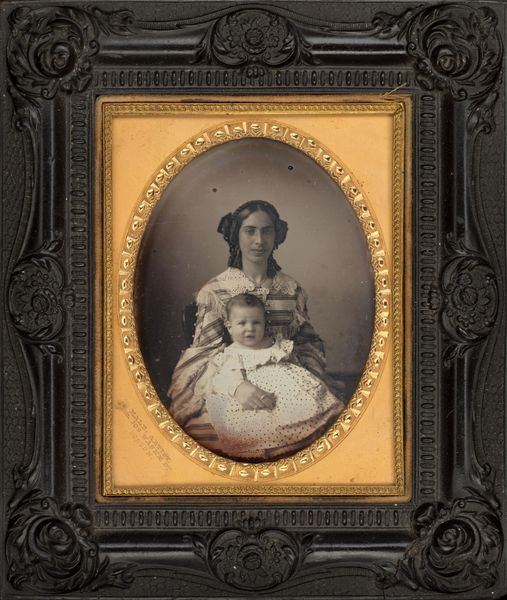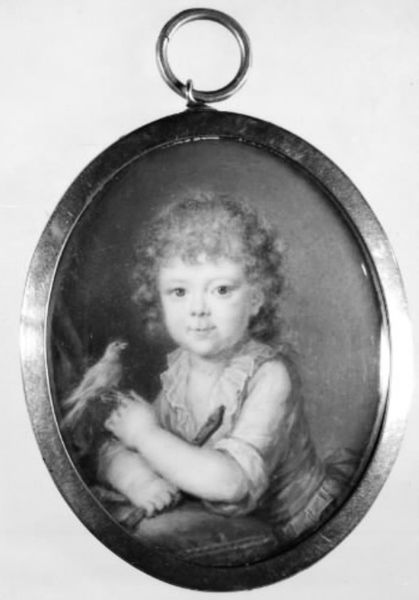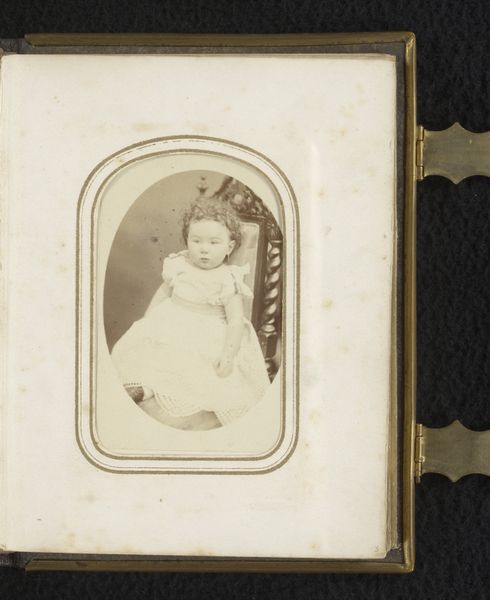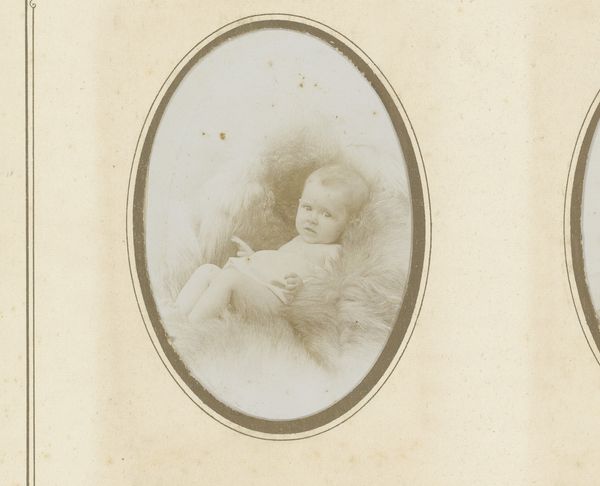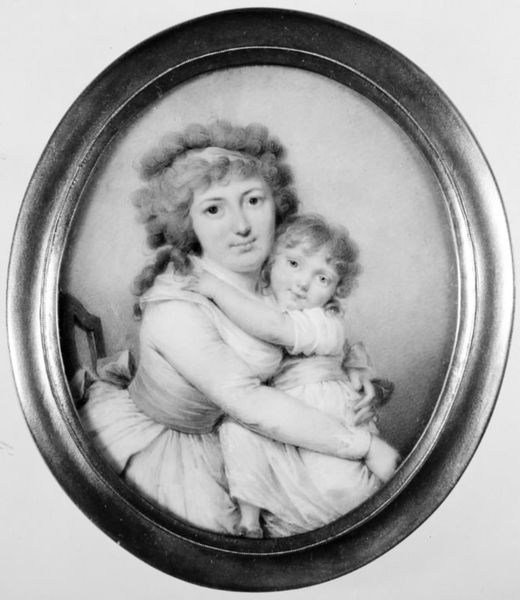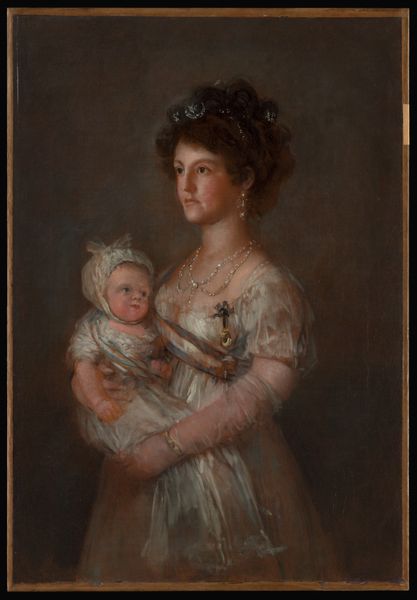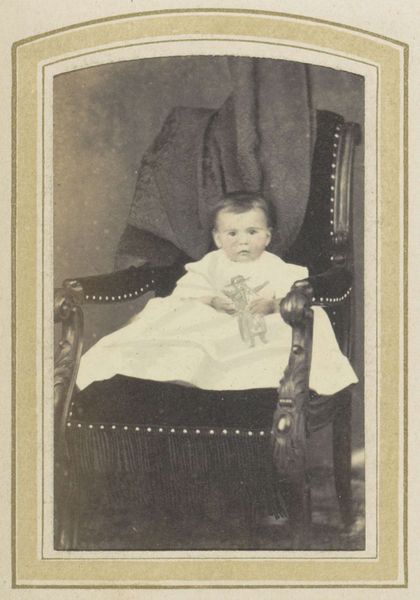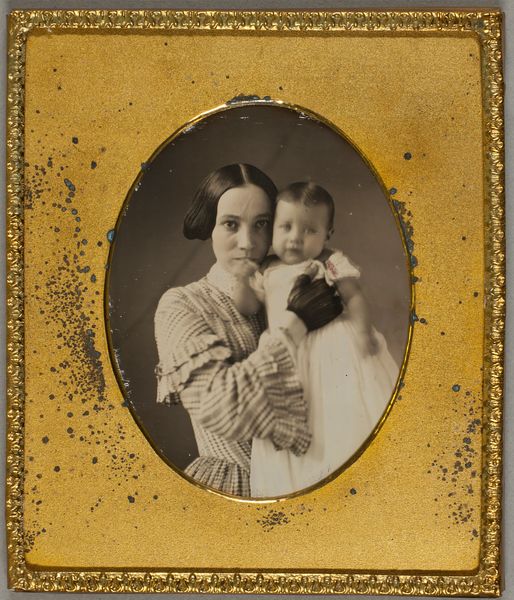
Mrs. Charles Willson Peale (Rachel Brewer) and Baby Eleanor 1790
0:00
0:00
painting, oil-paint
#
portrait
#
neoclacissism
#
painting
#
oil-paint
#
genre-painting
#
academic-art
#
miniature
#
watercolor
Dimensions: 2 1/2 x 2 in. (6.5 x 5.2 cm)
Copyright: Public Domain
Curator: Let's turn our attention to this delicate miniature. It’s entitled "Mrs. Charles Willson Peale (Rachel Brewer) and Baby Eleanor," a portrait created around 1790 by Charles Willson Peale himself. Editor: It strikes me as unusually tender, almost saccharine, in its presentation. The tight framing emphasizes the closeness, that mother-child bond…but also a sense of being watched, a staged intimacy. Curator: Well, as a historian, it’s interesting to consider that these miniatures weren’t simply sentimental trinkets. They served as important status symbols. This intimate portrayal reinforces Peale’s growing reputation within Philadelphia’s social elite, marking him as a key artistic figure. Editor: But even looking purely at the aesthetic decisions, notice the contrasting tones. The stark, nearly monochrome black ground pushes the central, golden-framed image forward. It draws your eye inexorably toward the mother and child, rendered in pastel shades. Curator: Exactly. It highlights the Neoclassical sensibility influencing American portraiture at the time, referencing those established styles from across the Atlantic, albeit in an individualized and approachable style fitting a genre-painting like miniature. Editor: I'm intrigued by the composition too. The mother’s gaze is direct and unwavering. While she clearly embraces the child, there's a certain… distance in her expression. Almost melancholy? Curator: Possibly. Keep in mind this was a period where motherhood was idealized and laden with expectations. Displaying such an artwork reinforced their roles and relationships but with the aim of promoting stability. Editor: And that’s what remains fascinating, that these objects we perceive now through aesthetic appreciation were such active players in solidifying early-American cultural norms. The material contributes directly to the social impact. Curator: Yes, from the framing to the composition to even the paint materials selected, such as oils, it’s another look into those stories and functions within these portrait traditions and the evolution within. Editor: Precisely! Looking closer only unravels more connections to be made to better the understanding.
Comments
No comments
Be the first to comment and join the conversation on the ultimate creative platform.
